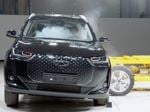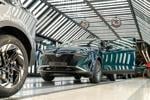Volvo is taking part in a project to determine if an electric vehicle can be charged up in the same way as an electric toothbrush.
The inductive charging project is in partnership with Belgian technology specialist Flanders' Drive.
With inductive charging, energy is transferred wirelessly to the car's battery via a charging plate buried in the road surface.
"The aim is naturally that it should be as convenient as possible to own and use an electric car," explains Johan Konnberg, project manager from the Special Vehicles division of Volvo Car Corporation.
A Volvo C30 Electric is being delivered to Flanders' Drive today to be modified for inductive charging.
The handover also marks the formal starting signal for the project, which goes under the name of CED (Continuous Electric Drive).
Other participants in addition to Volvo Car Corporation and Flanders' Drive, which is owned by the Belgian state, are bus manufacturer Van Hool and tram manufacturer Bombardier.
In inductive charging, a charging plate is buried in the ground, for instance in the driveway at home where the car is parked.
The charging plate consists of a coil that generates a magnetic field. When the car is parked above the plate, energy from the plate is transferred without physical contact to the car's inductive pick-up.
The energy that is transferred is alternating current. This is then converted into direct current in the car's built-in voltage converter, which in turn charges the car's battery pack.
Charging a battery pack of the size fitted to the Volvo C30 Electric, 24 kWh, is expected to take about an hour and twenty minutes, if the battery is entirely discharged.
That compares to around eight hours currently required for a full charge from empty for plug-in charged EVs.
The Volvo C30 Electric is part of Volvo Car Corporation' electrification strategy. It is as well-equipped, comfortable, sporty and safe as the standard car - while at the same time offering the driver a range of up to 150 kilometres per charge with zero carbon dioxide emissions.
Deliveries of the initial batch of 250 cars to selected customers in Europe will begin during the second half of 2011.












Login to comment
Comments
No comments have been made yet.